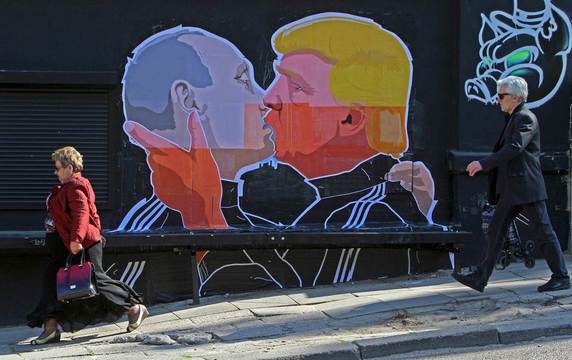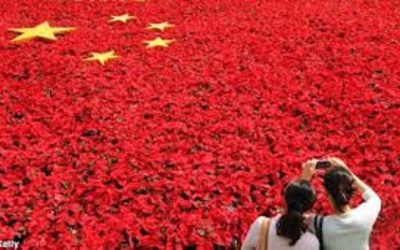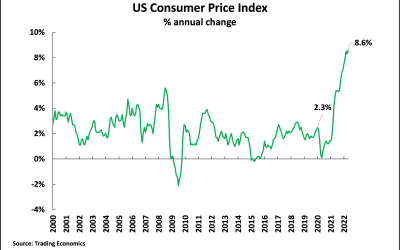But much analysis treats the questions of Trump’s relations with China and Russia as though they were separate issues. Trump’s ‘obsession’ with Russia is seen as ‘irrational’ or even perhaps due to personal blackmail. This is a serious error. The Trump administration’s policies towards Russia and China, particularly by those closest to Trump, are inseparably connected – as this article shows. Their plan is to create bad relations between China and Russia – first to defeat China by isolating it and then later to defeat Russia after its most powerful international ally, China, has been weakened. To understand Trump’s policies clearly it is necessary to stop seeing his relations with Russia as personal and instead to see them in terms of geopolitical differences within US foreign policy.
The key to understanding Trump’s obsession with creating good relations with Putin, which is of course ultra-controversial in the US, is the attempt to bring Russia into an ‘anti-China alliance’. Because this is a key geopolitical issue for China it is therefore necessary to clearly understand Trump’s course.
Russia and Putin
Major sections of the US media declare Trump is ‘soft on Russia and Putin’ and some ,even without proof, claim that Russia possesses ability to blackmail Trump due to possession of financially or sexually compromising information on him. But even before Congress passed the Bill preventing Trump lifting sanctions against Russia without Congressional approval, Trump has been entirely clear that he would maintain US sanctions against Russia ‘at least for a period of time ‘. This was set out without equivocation in Trump’s hour-long interview with the Wall Street Journal on 13 January 2017, after his election and before he became President. Equally Trump made no commitment to withdraw US troops from the new provocative NATO military build-up in Poland and other states close to Russia’s border. Trump merely agreed to a summit meeting with Putin: ‘I understand that they would like to meet, and that’s absolutely fine with me’ – this meeting was of course held at the G20 summit in Hamburg. However, Trump had clearly stated to the Wall Street Journal he would only withdraw sanctions against Russia if Russia pursued a foreign policy agreeable to the US: ‘If you get along and if Russia is really helping us, why would anybody have sanctions if somebody’s doing some really great things?’
In summary, Trump was not proposing a policy ‘soft on Putin/Russia’ at all. Trump proposes a clear ‘stick and carrot’ approach to Russia – the ‘stick’ being continued sanctions if Russia pursues a foreign policy contrary to that which the US wants, the ‘carrot’ of lifting sanctions if Russia pursues a foreign ‘doing some really great things’ from the viewpoint of the US – that is acting in line with policies the US desires.
What Russian foreign policy, therefore, would Trump consider to be ‘doing some really great things’ from the point of view of the US? The answer lies in what has been Trump’s strongest foreign policy emphasis – hostility to China.
Trump’s anti-China course
Following threats to impose 45% tariffs on China’s exports to the US during his presidential campaign, within a month of his election Trump broke with 40 years of US adherence to the One China policy by his phone call with Tsai Ing-wen. Trump then went further by explicitly calling into question the US’s One China policy, stating to the Wall Street Journal, when asked if he supported One China: “Everything is under negotiation including One China.”’.
These policies followed logically both from Trump’s election campaign and from bringing into the core of the Trump transition team, and then his incoming administration, some of the US’s most hardened anti-China forces. As the Financial Times noted: ‘Advisers to Mr Trump include Alexander Gray, who formerly worked for Republican Congressman Randy Forbes — an outspoken critic of China’s government; [and] Mike Pillsbury, author of The Hundred Year Marathon, which argues that China is gearing up for world domination.’
As is now well known the person Trump endorsed as ‘right on’ about China is Peter Navarro – a person previously obscure but now rightly notorious in China. Navarro was first brought into the transition team and then appointed director of Trump’s National Trade Council. Navarro sees war with China as ‘very likely’ and claims ‘Bill Clinton sold America down the Shanghai River’. He is producer of the YouTube programme ‘Death by China’. Navarro is the author of three virulently anti-China books in the last eight years: Crouching Tiger – What China’s Militarism Means for the World, Death by China – Confronting the Dragon, A Global Call to Action and The Coming China Wars: Where They Will be Fought and How They Can be Won.
As the New York Times also noted: ‘In a strong signal, Mr. Trump has turned to Dan DiMicco, a longtime steel executive and trade critic, to oversee trade issues during his administration’s transition. Mr. DiMicco writes a personal blog, liberally sprinkled with exclamation points, that blames America’s industrial decline on cheating by trade partners, particularly China.
‘“Hillary Clinton has claimed Trump’s trade policies will start a ‘Trade War’ but what she fails to recognize is we are already in one,” he wrote on his blog last summer. “Trump clearly sees it and he will work to put an end to China’s ‘Mercantilist Trade War’! A war it has been waging against us for nearly 2 decades!”’
Given such policies it is scarcely necessary any longer to demonstrate Trump’s anti-China orientation. The interrelation of this with his ‘stock and carrot’ approach to Russia is then clear.
The WSJ interview
Around Trump’s interview with the Wall Street Journal, and other statements, Trump’s transition team carried out briefings to the media. These dealt with the Trump interview and the inflammatory anti-China remarks by Tillerson. Trump’s nominee for Secretary of State, during his confirmation hearings, that regarding China’s South Sea islands: ‘access to those islands is also not going to be allowed [to China].’
A division appeared in Trump’s team on whether Tillerson’s remarks meant the US would directly try to impose a naval blockade on China’s South Sea ialands. Reuters reported: ‘A Trump transition adviser told Reuters that Tillerson, Trump’s pick to be America’s top diplomat, did not mean to suggest the new administration would impose a naval blockade, which would risk armed confrontation with China.’
However, noting this division, Reuters reported simultaneously: ‘But another official authorized to speak on behalf of the transition team pushed back on that view, saying Tillerson “did not misspeak” when he said China should be barred from its man-made islands.’
Despite this difference on whether a naval blockade against China’s South China Sea islands would or would not be attempted Reuters noted overall: ‘Amid the conflicting signals on policy, the [Trump] team appears to be making progress on plans for a major naval build-up in East Asia to counter China’s rise.
‘The transition adviser told Reuters about specifics under consideration, such as basing a second aircraft carrier in the region, deploying more destroyers, attack submarines and missile defense batteries and expanding or adding new bases in Japan and Australia.
‘They are also looking at installing “air force long-range strike assets” in South Korea, bordering China’s nuclear-armed neighbor North Korea, said the adviser who spoke on the condition of anonymity.
‘Trump, who succeeds President Barack Obama on Jan. 20, has vowed to greatly expand the U.S. Navy to 350 ships.’
Reuters further noted: ‘”Once we start correcting the military imbalance, I actually think you will get more cooperation [from China] rather than less,” the Trump adviser said.
‘Trump and his cabinet nominees have also vowed to step up pressure on China to rein in North Korea’s nuclear and missile programs, including by holding out the possibility of “secondary sanctions” on Chinese entities found to be violating sanctions on Pyongyang.’
Reuters concluded: ‘Trump advisers dismiss concerns their approa
ch could prove risky or counterproductive, arguing that a “peace through strength” stance will put real muscle behind U.S. policy in the region after decades of under-resourcing due to U.S. distractions elsewhere in the world.’
The key phrase here is ‘decades of under-resourcing due to U.S. distractions elsewhere in the world’. This is the key to understanding the Trump administrations strategic thinking. It is this phrase which gives the key to Trump’s otherwise ‘strange’ obsession, in US terms, about saying favourable things about Putin and Russia. It also makes clear the reason for the very precise formulation in Trump’s remarks regarding sanctions against Russia in his lengthy interview with the Wall Street Journal.
This analysis that China is the ‘main enemy’, against which the US must concentrate its forces, differs in tactics but flows from earlier ‘neo-con’ analyses of US foreign policy – such as the US Council on Foreign Relations published study ‘Revising U.S. Grand Strategy Towards China’. A more extensive analysis of US foreign policy thinking which preceded Trump is given in my book The Great Chess Game (一盘大棋? ——中国新命运解析 ).
Concentration of forces
It is obvious that a key obstacle Trump faces in confronting China is Russia. A Russia friendly to China protects a large part of China’s northern border. Russia possesses extremely powerful nuclear forces which the US would not risk engagement with when making calculations on war with China. Russia also plays a specific role in relation to Japan.
Japan is essentially a US semi-colony. In its policy matters, particularly military and economic, Japan has no ability to take decisions outside qualitative limits set by the US. However, Japan also has a large economy, the third biggest in the world. Japan therefore also possesses strong military potential. A combination of the US and Japan against China would be powerful and the US alliance with Japan is considered crucial by US strategists for confronting China – as Trump indicated by meeting with Abe immediately after his own election.
But Russia’s good relations with China militarily more than offsets Japan. Therefore, as long as Russia is on good terms with China the US, to the East of China, is unable to gain any decisive military advantage against China.
Indeed, in attempting to carry out the US ‘pivot to Asia’, Obama/Clinton faced two key geopolitical problems – which then became intertwined. First, Bush’s invasions of Afghanistan and Iraq had led to serious US economic losses, with the cost of the Iraq war estimated at well over $1 trillion, and to large parts of the US military being bogged down in the Middle East and Afghanistan. The disastrous consequences of the Iraq invasion, and then the US led military action to overthrow Gadhafi in Libya, then led to ‘jihadists’ controlling major parts of the Middle East and North Africa – and able to launch terrorist attacks in Europe which led to strong popular dissatisfaction in that region. US allies such as Saudi Arabia and Israel also supported these jihadists against their regional rivals such as Iran and the Assad regime in Syria. But Iran and Assad were key allies of Russia.
Simultaneously Obama/Clinton launched a direct attack on Russia’s core interests by supporting a coup d’etat against the pro-Russian president of the Ukraine in 2014. This served a number of direct US interests. First the US strategically seeks to weaken Russia, as Russia is seen as a powerful state. Second, there was a direct US interest in breaking up what had been for some time good Germany-Russian relations – good relations of Germany and Russia forms a powerful axis in Europe, allowing Europe to follow a more independent policy, and therefore good German-Russian relations are looked on with disfavour by the US. The Ukrainian coup d’etat may also have been seen as a way to put further pressure on Russia to change its policy in the Middle East.
These confrontations with Russia in the Middle East and in the Ukraine became intertwined as Russia was an ally of both Iran and the Assad regime in Syria and could provide both major military support. The US thereby became simultaneously engaged in an intertwined way with a series of wars in the Middle East and a confrontation with Russia. These were the ‘distractions elsewhere’ which had led to the ‘under-resourcing’ of the US confrontation with China noted by Trump’s team.
The conclusion which flows from this for US policy is clear if, as the members of the Trump team believe, for the US China is the main enemy. The ‘distractions’ have to be put an end to if all possible forces are to be concentrated against China. And to achieve this US confrontation with Russia has to end, friendlier relations between the US and Russia have to be achieved, and Russia has to be drawn or forced into an ‘anti-China alliance’.
This has long been argued by foreign policy specialists in the US. As early as 2012 the Atlantic Sentinel argued the US had to reverse Nixon’s tactic of forming an alliance with China against the USSR/Russia, by instead forming an alliance with Russia against China: ‘much as Nixon and Kissinger sought the “dragon” to balance against the stronger “bear”, the United States must consider the reverse.’
Zachary Keck, a leading US foreign policy expert, argued in 2013: ‘at some point the US will have to make a choice about whether the issues in other regions are important enough to scuttle ties with Russia in the Pacific. In the Asian Century, the answer to this question should almost always be “no”.’
This analysis is strongly supported by key Asian strategists given advice to the US. Typical is Kishore Mahbubani, Dean of the Lee Kuan Yew School of Public Policy in the National University of Singapore. Singapore is a key US ally against China and Mahbubani is one of its top strategists. Mahbubani set out what may be considered a blueprint for Trump.
Mahbubani argued, that all the US nonsense about promoting democracy advocated by Obama/Clinton should be stopped: ‘First, end the ideological crusade of promoting democracy.’ Trump has precisely done this.
Mahbubani then concluded for US policy: ‘ Second, embrace Russia and do so meaningfully… Unwise western expansion of NATO has not enhanced western security. It has only alienated Russia. Yet when the West finally wakes up to deal with a rising China, Russia would provide just the sort of geopolitical heft needed to balance Beijing’s power. Today, in direct violation of its own long-term geopolitical interests, the west is driving Russia towards China… This compulsion to act against its own interests perfectly illustrates declining western geopolitical wisdom.’ Trump is clearly seeking to act on this point also. Achieving such a geopolitical realignment of bringing Russia into an alliance with the US against China requires not ‘softness’ on Russia but a policy of both ‘sticks’ (maintaining sanctions if Russia refuses to enter the anti-China alliance) and ‘carrots’ (lifting sanctions if Russia enters the anti-China alliance). Only such a policy (as opposed to ‘softness on Russia’, ‘admiration for Putin’, blackmail by ‘kompromat’) is consistent with the clear policy of carrots and sticks laid out for US policy to Russia in Trump’s Wall Street Journal interview.
In summary Trump’s ‘opening to Russia’ is merely another aspect of his anti-China policy. What therefore, in addition to China’s polices, are the obstacles for Trump to draw Russia into a new anti-China alliance? They may be divided into obstacles outside Russia, and domestic obstacles within Russia.
Obstacles
Taking first obstacles outside Russia a first one is Israel and the very strong pro-Israel lobby inside the US. Israel does not consider China as its main enemy – Israel considers Iran as its main enemy. But Iran is an ally of Russ
ia, therefore Israel fears if Trump is friendly with Russia the US will not really confront or attack Iran. Israel fears concessions will be made to Iran. For this reason, the powerful pro-Israeli lobby in the US is not in favour of warm US relations with Russia – unless Russia agrees to drop its alliance with forces Israel considers enemies such as Assad and Iran.
Second Trump, to have agreement with Russia, will have to make real concessions to Putin – Putin is not a fool, won’t be taken in merely by warm words, and would want real concessions. Some of these would be in Syria but the most important are the interconnected issues of the economic sanctions against Russia and the situation in Ukraine.
The situation in what may be termed more correctly the ‘Ukrainian state’ (for the Ukraine is not really a united country) is the most crucial of these. First it is militarily decisive for Russia. The distance from Ukraine’s Kiev to Moscow is only 750km – foreign military forces in the Ukraine are therefore a deadly threat to Russia. Even leaving aside Russia’s rational strategic military calculations, after NATO’s expansion eastwards Russia can have less than zero confidence in any US pledges not to advance foreign military forces as close as possible to Russia’s border.
Second the eastern part of what is now ‘Ukraine’ is a major economic region closely linked to Russia. With this region added to Russia, either legally or practically, Russia is far more economically powerful, while without it Russia is significantly weakened. Because the ‘eastern Ukraine’ is a major industrial complex if this is de facto re-integrated into Russia the power of Russia grows compared to Germany and France.
Third, it should be understood clearly in China that there is not in any real sense a region called ‘eastern Ukraine’. There is a country called ‘western Russia’. The population in ‘eastern Ukraine’ is ethnically, linguistically, religiously, culturally Russian. The only reason they are within a state called ‘Ukraine’ is because within the former USSR it was not of decisive significance where the borders of the USSR’s Republics were drawn. Due to the fact they are ethnically, linguistically, religiously and culturally Russia the inhabitants of ‘eastern Ukraine’ therefore consider themselves Russian and want unity with Russia. That is why, after the pro-US coup d’etat, they can only be reintegrated into ‘Ukraine’ by extreme military violence – bombings, artillery bombardments of cities, massacres. And it was the willingness of the pro-Western regime in Kiev to carry out that military violence against the Russian population in regions such as Donetsk that makes it psychologically and politically impossible for them to rejoin a united ‘Ukraine’. Equally the population of Russia also considers their own compatriots are under attack when the Kiev regime uses that military violence against civilians.
To the degree that there is any criticism of Putin inside Russia over Ukraine, and his approval rating remains extremely high, it is not that his policy in is too ‘hard line’ but that it is not ‘hard line’ enough. Any policy of US rapprochement with Russia would therefore have to involve real concessions to Russia over ‘Ukraine.
But for the US to make concessions to Russia over the Ukraine is now dangerous for the West European governments – for the governments of Germany, France, Poland etc. These countries would not have picked the fight with Russia in ‘Ukraine’ without US urging, but they believe once that fight was launched Russia cannot be seen to emerge victorious – if it does then it will appear Russia, not ‘the West’ (US, France, Germany) is the most powerful force in Eastern Europe.
Therefore, two very powerful groups inside the US oppose agreement with Russia – one is pro-Israel forces and the second pro-European forces. These forces fear that Trump’s attempt to draw Russia into an anti-China alliance will lead to concessions being made to Russia on issues seen as affecting the interests of Israel and Western Europe. Therefore, every day on the US media can be seen fierce fighting between rival groups within ruling circles in the US over what relation to take to Russia.
Relations in Russia
Finally, what is the alignment of forces within Russia on these issues and what is the relation to China?
Analysing first the situation inside Russia, the US does not misjudge that there are pro-US forces inside Russia. A large part of the Russian ‘oligarchs’ formed out of the privatisations of the 1990s have no patriotic attachment to Russia at all. They do not care if Russia as a country is ruined provided they become rich. These forces would be only too happy to enter an anti-China alliance with Trump no matter what the damage done to Russia. The slightest proposed, and purely temporary, ‘carrot’ offered to Russia by Trump will be used by these forces as an argument to enter into an ‘anti-China/pro-US’ alliance.
But the situation with Putin is different. The US has made determined and direct attempts to remove Putin from office – to achieve ‘regime change’. Putin has good reasons not to trust the US not for psychological but for directly political reasons. Furthermore, the Russian military and security services know perfectly well the total hostility of the US to Russia and the prolonged and continuing US attempts to weaken Russia. While Putin has the duty as Russian president to do everything possible to try to get sanctions lifted against Russia, he is also under pressure not to do this either at the expense of Russia’s national patriotic interests or, more narrowly, at the expense of his own team’s leadership surviving.
It is also perfectly clear what is the US plan. If the US could draw Russia into an anti-China alliance, and successfully weaken China, then the US would turn around and seek to weaken Russia – because these US forces that are today anti-China would tomorrow become anti-Russian. Furthermore, as there are, as noted, strongly anti-Russian forces in the US it is not even certain that Trump would be allowed to finish any process of rapprochement with Russia, and it would almost certainly be terminated when his term ended. Indeed it is clear that this could happen even earlier, as there is a part of the US political establishment, linked to interests which have already been analysed, which is determined to attempt to either paralyse or cripple Trump’s administration on issues such as Russia – and if he cannot be pressured to change his policies if necessary to even in the last resort seek to remove him from office.
Finally, the Russian people also know they were fooled by the US. In 1991, when the USSR collapsed, there was probably no country in the world that was more pro-US than Russia. But after a quarter of a century in which the US has done everything possible to weaken Russia the Russian people know they were tricked. There are today few countries in the world in which public opinion is more anti-US than in Russia.
For all those reasons, there are formidable obstacles in Russia to entering an anti-China alliance. For Russia, today objectively China is the main country good relations with which aids protecting Russia from further US attacks. Russia’s patriotic interests therefore coincide with good relations with China. The weakening of China would simply be followed by a new US attack on Russia. But nevertheless, comprador forces in Russia, led by the oligarchs and other non-patriotic forces, do not care if their own country is weakened, merely about their own riches. Therefore, Trump’s strategy of an ‘anti-China alliance’ coincides with the interests of such non-patriotic (comprador) forces in Russia.
China’s policy
China’s policy interests in these issues are also geopolitically clear. China’s difference with the US regarding Russia, China’s strategic advantage in relations with Russia, is that China is
not seeking to weaken Russia. Not merely do good relations with Russia correspond to China’s fundamental foreign policy framework of ‘win-win’, and to protection of China’s long northern border, but good relations with Russia in confronting threats from a US-Japan alliance is immediately important for China.
It is therefore crucial that China spreads as widely as possible in Russia a clear explanation of this. All reports state that relations between Russia and China at the very highest levels are favourable. But, in addition to Russian and Chinese political and military circles, who understand such issues as US military threats to Russia and China, both Russia & China have large and well informed political, intellectual, academic etc layers who follow geopolitical issues. A clear explanation by China not only of the direct benefits of good Russia-China relations but also of China’s understanding of key issues for Russia such as the Ukraine is therefore by itself fundamental in establishing the firmest possible basis for favourable Russia-China relations. Although there is no sign at all of any wavering of Russia’s ‘One China’ position clear emphasis on this and other key issues for China is also beneficial.
But there remains significant extra work to do in creating wider the firmest possible China-Russian relations. Relations between the Chinese and Russian militaries are widely reported to be good – and both evidently clearly understand the threat posed to the two countries by the US. Good institutionalised ties also exist through the Shanghai Cooperation Organisation.
But in other areas in the authors view further work needs to be done to strengthen cooperation. In particular, on the economy it is necessary to intensively study areas of mutual economic benefit for Russia and China. Energy exports from Russia to China, as well as exports of an advanced military character, in exchange for China’s manufactured production, are fundamental but they are also too narrow. Russia’s per capita Gross National Income in purchasing power parities (PPPs) is two thirds higher than China’s – with Russia therefore having a significantly higher productivity level than China. China and Russia consequently have advantages in significantly different types of production.
Russia also needs to be more clearly integrated into discussion of China’s One Belt Road and its relation with Russia’s Eurasian Economic Union – at a recent seminar for example a legitimate point was made that Russia’s Trans-Siberian Railway did not appear to have received sufficient attention as a key piece of infrastructure in the OBOR region. It should therefore be a top priority to work out the greatest area of economic cooperation and trade. Intensified ‘people to people’ relations, tourism and cultural ties need to supplement these efforts.
All these issues need to be understood from the viewpoint of the great strategic common interests of Russia and China and the joint patriotic interests of the two countries. It should also be noted that US intelligence services, attempting to disrupt Russia-China relations, will not only present themselves as explicitly pro-America, but also as ‘ultra-nationalists’ on both sides thereby aiming to spread discord – in Russia spreading a fantasy that ‘tens of hundreds of millions of Chinese intend to move to Siberia’, in China calling for rejecting the internationally agreed border demarcated between Russia and China etc.
The common framework for all this is a clear understanding that the strategic aim of the Trump team is to attempt to draw Russia into an ‘anti-China alliance’ – and that this policy is not merely against the interests of China but against the interests of Russia itself.
In China, it should be clearly understood Trump does not have a ‘strange’ obsession with being friendly to Russia and Putin – this is merely a central part of Trump’s anti-China policies.
He held meetings with senior Russian officials including the foreign minister, economic adviser to the President, chair of the Russian parliament, chair of the Russian Federation Council etc. He was engaged in public debates including with the Vice-President of Russia and the economic adviser to President Yeltsin. He accurately predicted at that time that the collapse of the USSR would be used to advance NATO’s military forces up to Russia’s borders.
He advised companies on Russia, predicting the beginning of revival of the Russian economy under prime minister Primakov and then Putin. He left Russia in 2000 to take charge of economic policy for the Mayor of London. This 25 years of analyses comparing China’s and Russia’s economic policies was part of the process leading to him being appointed Senior Fellow at Chongyang Institute for Financial Studies, Renmin University of China.







